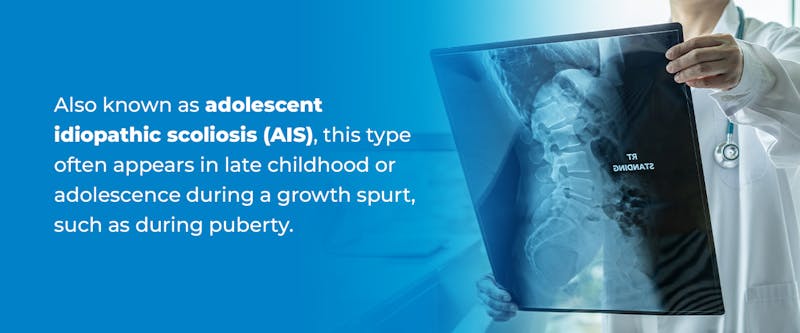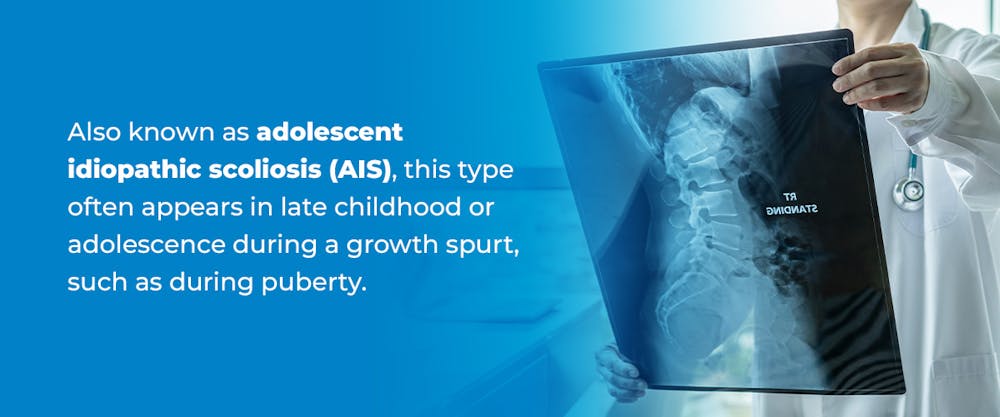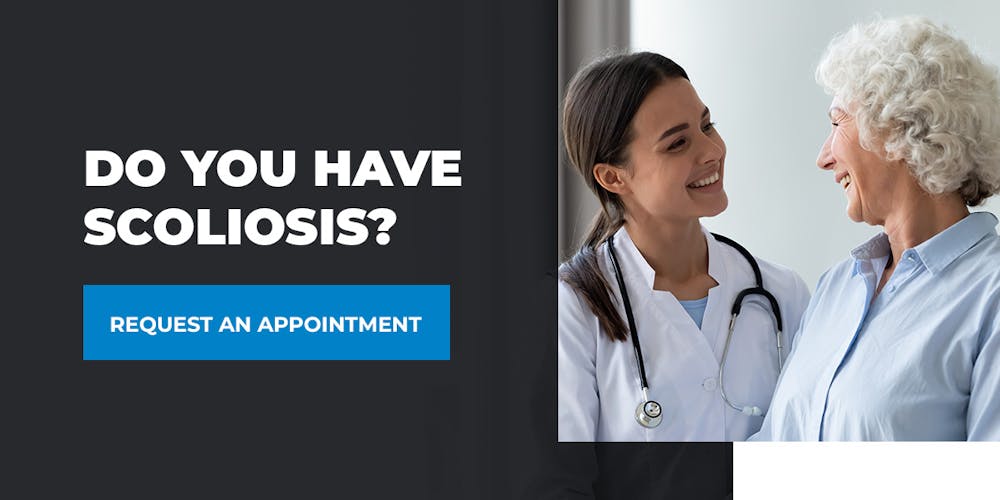
The importance of the spine is well-understood by most. It supports your weight, enables movement and maintains nerve function throughout your body. Less known is the importance of your spine’s curvature. Your spine should be straight up and down with a gentle “S” curve from top to bottom. An ideal curve to your spine helps with balance, stabilizes muscle function and supports proper nerve function. In this article, learn about scoliosis — a condition that affects your spine’s curvature!
What Is Scoliosis?
Scoliosis is a spinal condition where the spinal column has a sideways curvature. As a result, a person with this condition may have a spine that appears in a horizontal rather than vertical “S” or “C” shape. Scoliosis is usually diagnosed in adolescents, and most cases are mild. In general, mild scoliosis doesn’t cause any significant issues like pain, breathing difficulties or trouble with mobility. When scoliosis does cause pain, it is usually because the abnormal curvature in the spine:
- Strains and inflames the joints.
- Stretches, irritates or pinches the nerves.
- Tightens muscles due to incorrect posture.
While a mild case of scoliosis will not usually cause problems, mild scoliosis in a child may worsen as their spine grows and develops. Children with mild scoliosis are often monitored closely, usually with X-rays, to see if the curve worsens as they age. If a curve worsens, the child may need to wear a brace that impedes the progression of scoliosis.
While rare, severe scoliosis can be disabling and cause problems with lung function. If the curve is severe enough, it can reduce space within the chest, impeding lung function. In these situations, surgery is most likely necessary. Other treatment options include:
- Massage therapy to relieve pain and increase circulation to the spine.
- Physical therapy to increase strength, flexibility and range of motion.
- Braces that support the spine.
- Various medications, such as over-the-counter pain relievers, like Tylenol or Advil, or antidepressants to relieve pain and improve your mood.
- Chiropractic adjustments to decrease pain and improve flexibility.
- Corticosteroid injections for significant scoliosis pain.

What Are the 3 Types of Scoliosis?
Scoliosis comes in many different forms, generally divided into idiopathic, neuromuscular or congenital scoliosis. These three types of scoliosis are defined according to their causes. Here is some more information on each of these three types of scoliosis:
Idiopathic Scoliosis
Idiopathic scoliosis is the most common variation of scoliosis. Idiopathic means the cause is unknown or that no single, discernable factor contributes to a disease’s development. As such, this type of scoliosis is diagnosed in children, adolescents or adults when no single, detectable condition or injury causes their abnormal spinal curvature.
Also known as adolescent idiopathic scoliosis (AIS), this type often appears in late childhood or adolescence during a growth spurt, such as during puberty. AIS occurs in 2-3% of children in the United States. Despite the idiopathic nature of AIS, researchers suspect but cannot confirm that various genes are involved with its development in people.
Some symptoms of idiopathic scoliosis include:
- An uneven waistline.
- Hip height discrepancies.
- One shoulder blade that protrudes more than the other.
- Ribs that appear more prominent on one side.
- Uneven shoulders.
To diagnose idiopathic scoliosis, doctors first conduct a detailed medical history review and physical exam of the spine and its movements and functions. One particular test they may perform during the physical exam is the Adam’s forward bend test, a simple and noninvasive test for detecting scoliosis.
With the Adam’s forward bend test, the doctor asks the patient to stand straight and tall. Once the patient is in the proper position, the doctor asks them to bend as far forward as possible with their spine. As the patient is bending their spine forward, the doctor examines both sides of the rib cage to see if one is higher than the other where they meet the vertebral column. If one side of the rib cage is higher, a hump will form on that side.
If your doctor suspects scoliosis after the Adam’s forward bend test, they will likely perform an X-ray to determine the severity of the abnormal curvature. The results of the X-ray will further assess treatment options.
Neuromuscular Scoliosis
Unlike AIS, neuromuscular scoliosis occurs when a known condition or disease primarily contributes to scoliosis. These conditions generally involve poor muscle control or neurological issues and may or may not be present at birth. Some common conditions that cause scoliosis include:
- Benign and malignant musculoskeletal tumors: If a tumor grows large enough to push the spine out of alignment, scoliosis may result. A benign tumor is non-cancerous, while a malignant tumor is cancerous.
- Cerebral palsy: Cerebral palsy is a group of disorders involving disruptions in the messages the brain normally sends to the muscles for regulating movement and coordination, leading to muscle weakness. Scoliosis commonly occurs in children with cerebral palsy, as muscle weakness impacts the development of the spine and its curvature.
- Muscular dystrophy: Muscular dystrophy is also a group of diseases that cause progressive muscle weakness and loss. When muscular dystrophy affects the muscles that support the spine’s natural curvature, scoliosis can develop.
- Polio: Polio is a virus that infects the nervous system and can cause paralysis. People who contract this virus can suffer from post-polio syndrome. Scoliosis is a common symptom of post-polio syndrome.
- Spina bifida: Spina bifida is a congenital condition where the spine and spinal cord do not form properly in developing babies. Around half of all patients with spina bifida develop scoliosis.
- Spinal cord injuries: If a spinal cord injury causes nerve damage that leads to loss of muscle control in your core, scoliosis can develop. Your core muscles are responsible for helping your spine stay in an upright position. If these muscles weaken or lose nerve signals, your spine can lean to one side.
Congenital Scoliosis
Congenital scoliosis is when an abnormality in spinal curvature is present at birth. This scoliosis type is usually detected earlier than idiopathic or neuromuscular scoliosis. Congenital scoliosis is also much rarer than the other two types, as approximately three in 100,000 people are born with congenital scoliosis.
Standard treatment options for congenital scoliosis include observation and bracing or casting. With observation, a doctor recommends scheduled appointments so they can monitor the progress of the spine as it continues to develop. Surgery for congenital scoliosis is considered if the patient has:
- Curves that worsen significantly over an observation period.
- Severe abnormal curvature of the spine.
- Large deformities in the spine or torso.
- Neurological issues due to the spinal cord abnormality.
Do You Have Scoliosis?
If you or someone you care about shows signs of scoliosis, it’s a good idea to see a doctor who can diagnose the condition and provide appropriate treatment options. Our spine specialists at the New York Spine Institute have abundant experience providing high-quality care for spinal conditions like scoliosis. We can determine the severity of your scoliosis with pinpoint accuracy and provide the proper treatment for your needs.
For an appointment with one of our spine specialists, we welcome you to contact us today!

